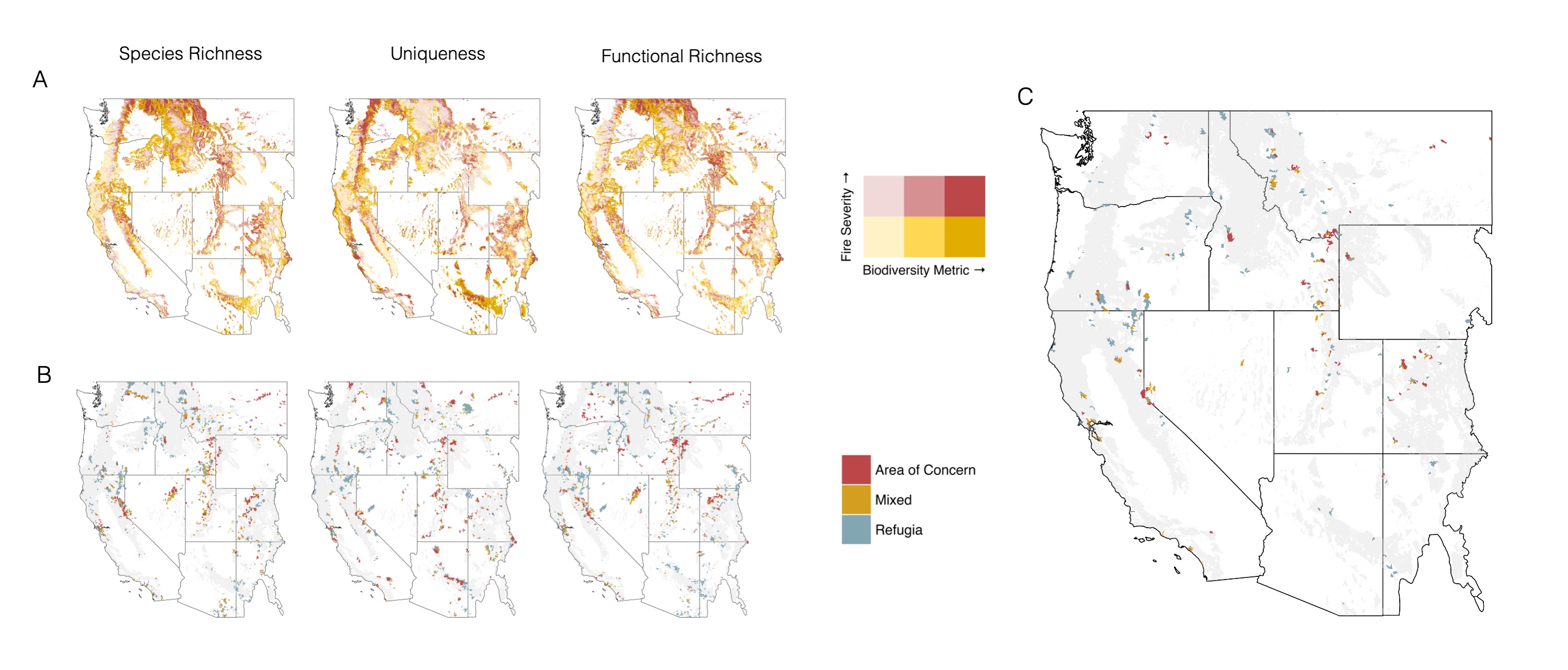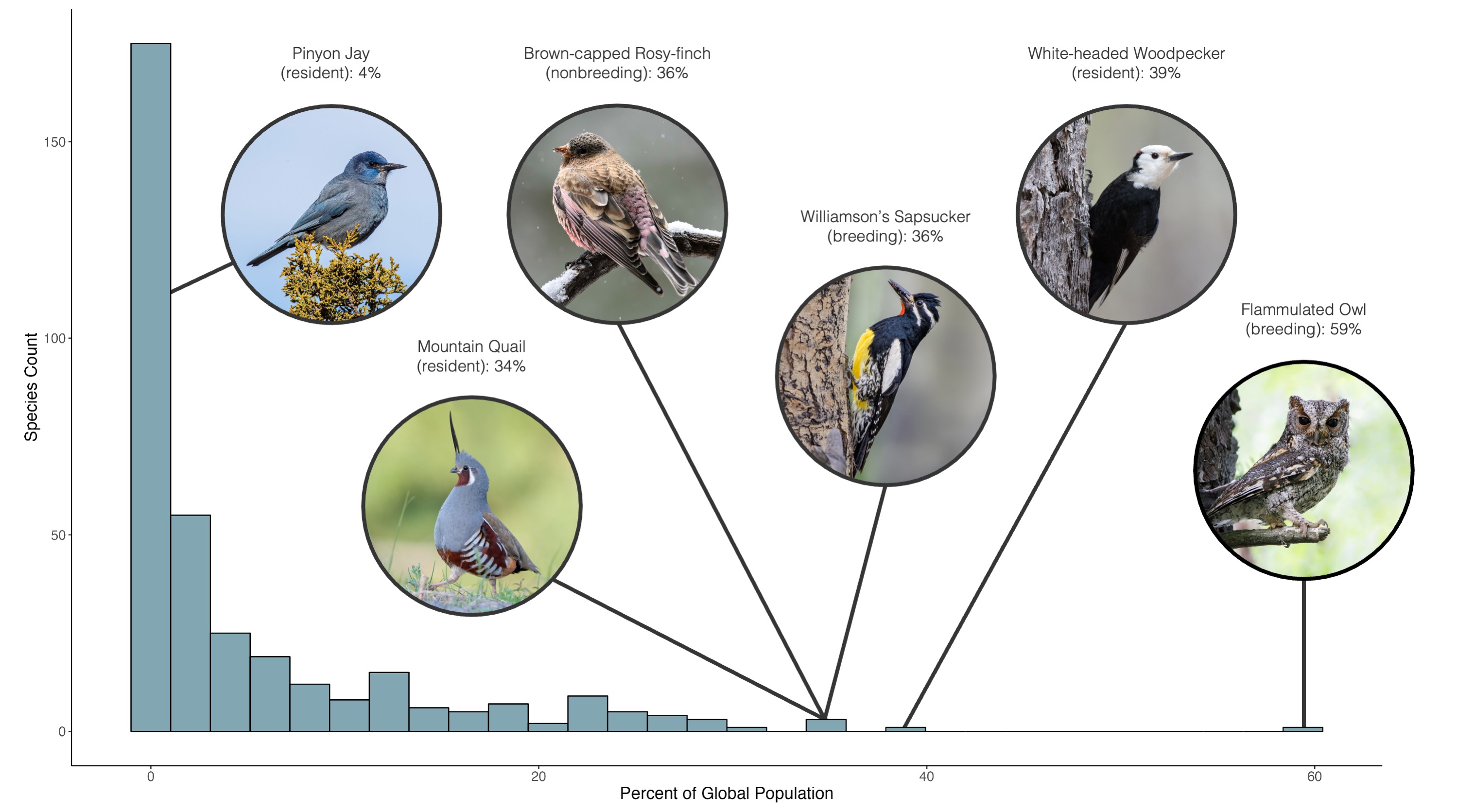Wildfire is a pervasive biogeographic process shaping communities across the globe. It is also changing profoundly due to human intervention, climate change, and drought. Understanding how these changes impact biodiversity patterns from local to global scales is critical for managing flammable ecosystems into the future.
My work leverages eBird data products and advances in fire forecasting to examine the predicted exposure of different facets of avian biodiversity to predicted high severity fire in the western United States. We identified regions of high or unique biodiversity that will be particularly highly exposed.
Maps comparing avian biodiversity distributions to fire severity including identified hotspots. (A) Shows bivariate maps of biodiversity metrics by predicted fire severity, with higher values of biodiversity in darker values, low severity fire in yellow, and high severity fire in red. (B) shows the hotspots for those metrics broken down by type, with “areas of concern” shown in red, “mixed” shown in yellow, and “refugia” shown in blue. Maps visualize species richness (column 1), local contributions to beta diversity (column 2), and functional richness (column 3). (C) shows hotspot areas congruent across all three biodiversity metrics, also broken down by type. Hotspots are identified at the HUC12 watershed level.
We also identified species for which an outsized percentage of their global population is predicted to be exposed to high severity fire, including some fire lovers (Mountain Quail, Williamson’s Sapsucker, White-headed woodpecker) and some for whom high severity fire represents a significant threat (Brown-capped Rosy-finch, Flammulated Owl).
Histogram of the number of species at different levels of population exposure to high severity fire. Histogram showing the number of species for a given percentage of global population exposed to high severity fire, with breeding and nonbreeding ranges treated separately. The population percentage for the top five most exposed species are illustrated on the graph, as well as a representative low-exposure species. Species with less than 10% of their total population in the forested study region are excluded. Photo sourced from the Cornell Lab of Ornithology | Macaulay Library: Pinyon Jay (ML310160781), Mountain Quail (ML586116811), Brown-capped Rosy-finch (ML626811381), Williamson’s Sapsucker (ML247159221), White-headed Woodpecker (ML86731361), Flammulated Owl (ML580715921). Source data are provided as a Source Data file.

